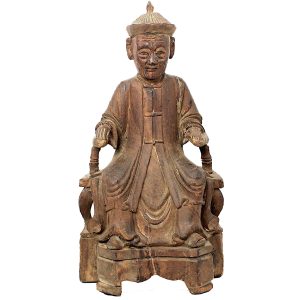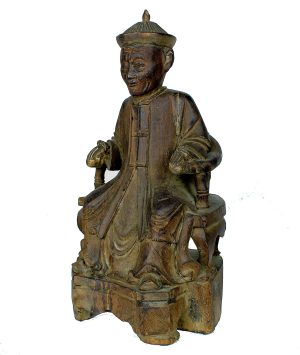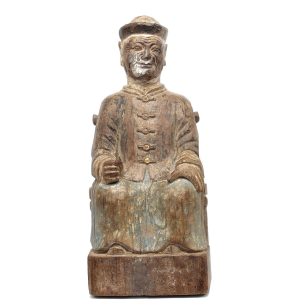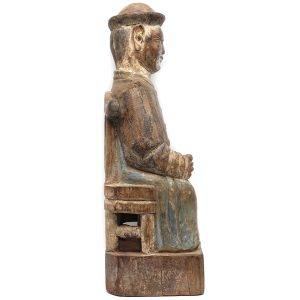Antique Mandarin Ancestor In Horseshoe Chair, China (19054)
Original price was: $850.00.$695.00Current price is: $695.00.H: 12.75” W: 6.625” D: 5.75” | FREE SHIPPING within Continental u.s.
Masterfully carved ancestor mandarin official on horseshoe chair in the round with cabriole legs, considered a “marker of high status, finely dressed in long Mandarin coat and pointed rattan hat. Benevolent face was homage to a revered family member. It is one of our favorite ancestor figures.




